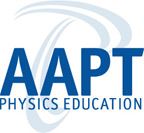- Home
- What We Do
- Laboratory Immersions
- Immersions 2020
- Imm2020PPPL_Spectroscopy
Plasma Physics - Spectroscopy
Princeton Plasma Physics Lab, June 25–27, 2020
(One set-up available)
Plasmas are the most common form of matter in the visible universe but remain one of the least studied topics in the undergraduate physics curriculum. While a fascinating multivariable system on its own, the study of plasmas also has connections to a significant number of topics in an undergraduate physics curriculum, from classical mechanics to atomic physics. In this Immersion, participants will first build a DC glow discharge, a simple plasma source that is understandable to undergraduate students yet flexible enough to be used in a variety of experiments (see our article in the Sept. 2013 edition of AJP for more details). This type of source is relevant to fluorescent lighting, plasma televisions, and surface treatment of materials. The dc glow discharge is composed of two conductors separated by some distance and electrical potential inside an evacuated vessel at moderately low pressures (between a few and a hundred Pascals). The electrical potential needs to be high enough (hundreds to thousands of Volts) to breakdown the gas into a plasma. The characteristics of the plasma are controlled by four variables: potential difference and distance between the electrodes as well as the type of gas used and its pressure. In our device, we evacuate glass vessels that house stainless steel electrodes. Each has a two stage direct-drive vacuum pump, an inlet valve system, and a pressure sensor. The vessels can be filled with any gas (including air) through one fine and one coarse valve. These valves also enable fine control of the gas pressure from 3 to 300 Pa. We use power supplies that provide a potential difference of up to 2000 V and 20 mA. 
Spectroscopy is one of the standard experiments in atomic physics courses. It is also one of the methods of evaluating plasma parameters such as electron density and temperature. An analysis of dc glow optical emission is readily accessible to undergraduate students. In a dc glow discharge, light is typically emitted by neutral atoms that are excited by electron collisions. If we further assume that electrons collide with atoms in their ground states, then the distribution of the excited levels depends on the electron energy distribution. Experimentally, observed line intensities are therefore related to the electron energy, and therefore the observed intensities can be used to estimate the electron temperature of the plasma (under the assumption that the electrons follow a Maxwell-Boltzmann distribution). We use a survey spectrometer for a broad spectrum of argon in a dc glow discharge and a higher resolution instrument with a high enough spectral resolution to distinguish individual lines which are used to infer the electron temperature via a Boltzmann-type plot.
This Immersion will be 2.5 days long. We will cover building the plasma source, vacuum techniques, calibration of the diagnostics, data acquisition and analysis, as well as all safety aspects of the device. We have several versions of this plasma source, the simplest costs only $4K, the largest approximately $10K which assumes that participants do not have any equipment available for use at their home laboratory. A full parts list will be available so that participants can easily recreate the laboratory setup at their home institution. The survey spectrometer is approximately $3,000 and the high resolution spectrometer is approximately $10,000.
Host and Mentor:
Jose L. Lopez is a Professor of Physics in the Department of Physics at Seton Hall University in South  Orange, New Jersey. He joined the faculty of Seton Hall University in 2011 as a member of the Department of Physics where he founded the Laboratory of Electrophysics and Atmospheric Plasmas (LEAP). Professor Lopez is the currently the Director of LEAP, whose research group studies, develops, and applies a wide range of theoretical and experimental techniques to understand, predict, and design novel electron-driven processes to generate plasmas with applications in lighting, energy conversion, materials modification, and in environmental and clean water technologies. He teaches courses in plasma physics and plasma processing to undergraduate and graduate students at Seton Hall. He further is a visiting professor and researcher in the Plasma Science and Technology Department of the Department of Energy’s Princeton Plasma Physics Laboratory at Princeton University.
Orange, New Jersey. He joined the faculty of Seton Hall University in 2011 as a member of the Department of Physics where he founded the Laboratory of Electrophysics and Atmospheric Plasmas (LEAP). Professor Lopez is the currently the Director of LEAP, whose research group studies, develops, and applies a wide range of theoretical and experimental techniques to understand, predict, and design novel electron-driven processes to generate plasmas with applications in lighting, energy conversion, materials modification, and in environmental and clean water technologies. He teaches courses in plasma physics and plasma processing to undergraduate and graduate students at Seton Hall. He further is a visiting professor and researcher in the Plasma Science and Technology Department of the Department of Energy’s Princeton Plasma Physics Laboratory at Princeton University.
Dr. Jose Lopez, Department of Physics, Seton Hall University, 400 South Orange Avenue, South Orange, New Jersey 07079. Email:
jose.lopez1@shu.edu. Telephone: 973-761-9057.





